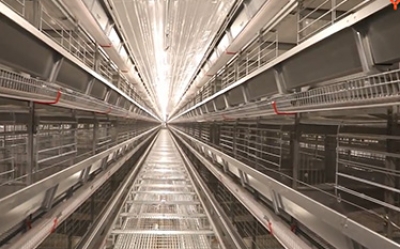Cost-Benefit Automatic Layer Chicken Cage Equipment
What are the different types of chicken cages?
1. Laying Hen Cages
A-Type Laying Hen Cages
H-Type Laying Hen Cages
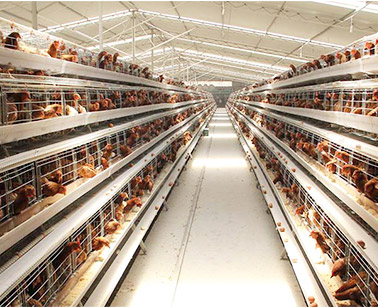
2. Broiler Cages
H-Type Broiler Cages
Broiler Flat Cages
3. Automated Systems
Conclusion
Where to Find the Best Egg Laying Chicken Cages for Sale
Introduction
Finding the best egg laying chicken cages for sale is crucial for poultry farmers looking to enhance their farm’s productivity and efficiency. High-quality battery cages for layers ensure the health and well-being of the chickens, leading to better egg production. This article will guide you through the process of finding the best poultry farm layer cages, considering various factors such as quality, price, and supplier reliability.
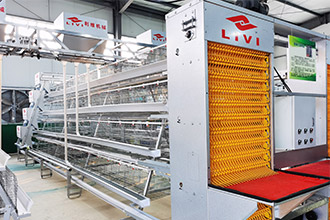
Importance of Quality
When looking for egg laying chicken cages for sale, quality should be your top priority. High-quality battery cages for layers are made from durable materials that can withstand the harsh conditions of a poultry farm. They should provide a safe and comfortable environment for the chickens, ensuring their well-being and productivity. Look for cages with features like corrosion resistance, sturdy construction, and proper ventilation.
Assessing Price
Price is another critical factor to consider when searching for poultry farm layer cages. While it’s important to stay within your budget, opting for the cheapest option may not always be the best decision. Cheap cages might compromise on quality, leading to higher maintenance costs and lower productivity in the long run. Instead, aim for a balance between cost and quality to ensure you get the best value for your investment.
Finding Reliable Suppliers
Choosing a reliable supplier is essential to finding the best egg laying chicken cages for sale. Research potential suppliers thoroughly, checking their reputation, customer reviews, and after-sales service. A reputable supplier - LIVI Poultry Farming Equipment Supplier will provide high-quality products, offer warranties, and have a responsive customer support team to address any issues that may arise.
LIVI Poultry Farming Equipment Supplier
With the advent of the internet, purchasing poultry farm layer cages online has become a popular option. LIVI Poultry Farming Equipment Supplier often offer a wider range of products and competitive prices. They can provide personalized service, quicker delivery.
Customization Options
Every poultry farm has unique requirements, and sometimes standard cages may not meet your specific needs. Look for LIVI Poultry Farming Equipment Supplier that offer customization options for egg laying chicken cages for sale. Customized battery cages for layers can be tailored to fit your farm’s layout and the specific needs of your chickens, ensuring optimal productivity and ease of management.
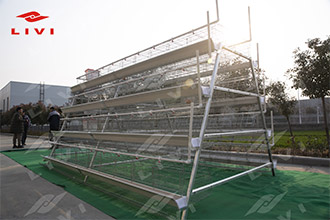
Evaluating Customer Support
Good customer support is a key factor when choosing a supplier for chicken egg laying cages for sale. A supplier with excellent customer service will help you with installation, provide maintenance tips, and assist you in case of any issues. Look for suppliers with positive customer feedback regarding their support services.
Conclusion
Finding the best egg laying chicken cages for sale involves careful consideration of quality, price, supplier reliability, and customization options. By prioritizing these factors, you can ensure that you invest in cages that will enhance your farm’s productivity and the well-being of your chickens. Remember, the right cages are a crucial investment for the success of your poultry farm.
How do battery cage systems contribute to disease control in poultry farming?
The Efficiency and Benefits of Automatic H Type Layer Battery Cages
In the modern era of poultry farming, efficiency and automation have become key factors in ensuring profitability and sustainability. One of the most significant advancements in this field is the introduction of automatic H type layer battery cages. These cages not only revolutionize the way chickens are raised but also enhance the overall welfare of the birds and the productivity of the farm.
What Are Automatic H Type Layer Battery Cages?
Automatic H type layer battery cages are specifically designed to house egg-laying chickens in a controlled and optimized environment. The 'H' shape of these cages allows for efficient stacking and maximum utilization of space, making them ideal for large-scale poultry farms. The automation aspect comes from the integration of various technologies that monitor and regulate key factors such as temperature, humidity, and lighting, ensuring optimal conditions for the chickens.
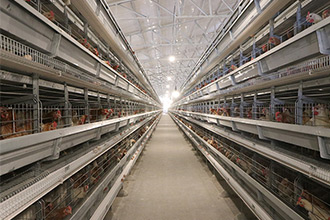
The Advantages of Automatic H Type Layer Battery Cages
- Efficiency: One of the primary benefits of automatic H type layer battery cages is their efficiency. These cages allow farmers to raise a large number of chickens in a small area, maximizing space utilization. The automation features further enhance this efficiency by reducing the need for manual labor and ensuring consistent conditions for the chickens.
- Optimal Conditions: By regulating temperature, humidity, and lighting, automatic H type layer battery cages provide optimal conditions for the chickens. This ensures that they are healthy, happy, and productive, resulting in higher egg production.
- Improved Welfare: The design of automatic H type layer battery cages takes into account the welfare of the chickens. They provide enough space for the chickens to move around and interact with each other, reducing stress and promoting overall health.
- Cost Savings: While the initial investment in automatic H type layer battery cages may be higher than traditional cages, the cost savings over the long term are significant. The automation features reduce the need for manual labor, saving on labor costs. Additionally, the improved welfare and productivity of the chickens result in higher egg production, further increasing profitability.
Case Study: H Type Layer Cages for 30,000 Automatic Chickens Farm in Ethiopia
To illustrate the effectiveness of automatic H type layer battery cages, let's take a look at a case study from Ethiopia. A farmer there recently invested in a 30,000-chicken farm equipped with automatic H type layer battery cages. The results have been remarkable.
Since implementing these cages, the farmer has seen a significant increase in egg production. The chickens are healthier and happier, resulting in fewer health issues and higher productivity. Additionally, the automation features have reduced the need for manual labor, saving the farmer significant time and money.
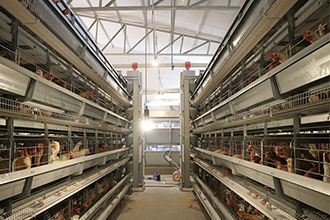
Conclusion
Automatic H type layer battery cages are a valuable addition to any poultry farm. Their efficiency, ability to provide optimal conditions for chickens, and improved welfare make them a winning choice for farmers looking to increase profitability and sustainability. By investing in these cages, farmers can ensure that their chickens are healthy, happy, and productive while also reducing costs and maximizing profits. For more information on how automatic H type layer battery cages can benefit your farm, check out our article on "H Type Layer Cages for 30,000 Automatic Chickens Farm in Ethiopia" [link to your article].
High-Quality A-type 4-Tier Chicken Layer Battery Cages
Are you looking for reliable and efficient chicken farming equipment for your poultry business?
Why Choose A-type 4-Tier Layer Battery Cages? If you're serious about maximizing your space and resources in poultry farming, then A-type 4-tier layer battery cages are the perfect choice. These cages are designed to provide optimal space efficiency, ease of management, improved health and productivity of chickens, and long-term durability. They are ideal for urban or semi-urban farming environments where space is limited.

Features of A-type 4-Tier Layer Battery Cages LIVI Poultry Equipment Factory's A-type 4-tier layer battery cages are made from high-quality materials, ensuring they are durable and built to last. The vertical design of the cages allows farmers to keep a high number of layers in a limited space. They are also equipped with automated feeding systems, advanced watering systems, waste management systems, and proper ventilation and lighting systems to create an optimal living condition for the layers.
Customer Testimonials and Success Stories Our A-type 4-tier layer battery cages have received positive feedback from farmers across different regions. John Mwangi from Kenya says his egg production has doubled since switching to our cages. Amina Adewale from Nigeria highly recommends our cages for their durability and efficiency. Peter Otieno from Kenya says the investment in our chicken cages has paid off tremendously.
How to Purchase and Install A-type 4-Tier Layer Battery Cages Purchasing and installing our A-type 4-tier layer battery cages is a straightforward process. Contact us through our website or customer service hotline to discuss your requirements and get a quote. Once you have decided on the specifications and quantity, place your order. We offer competitive pricing and various payment options to suit your needs. We ensure timely delivery of the cages to your location in Ibadan or any other part of Nigeria. Our team of experts is available to assist with the installation process. We also provide comprehensive after-sales support, including maintenance tips and troubleshooting assistance to ensure your farming operations run smoothly.
Conclusion Investing in A-type 4-tier layer battery cages from LIVI Poultry Equipment Factory is a smart choice for poultry farmers in Ibadan, Nigeria. With numerous benefits such as space efficiency, ease of management, improved health and productivity of chickens, and long-term durability, these cages can significantly enhance your farming operations and contribute to economic growth and food security in the region. Contact us today to learn more about our products and how they can help you achieve success in poultry farming.
Poultry farming battery cage system can boost productivity
Battery cage systems are now very popular in modern poultry farms. Advanced breeding technology and breeding programs can only be realized with the support of poultry equipment.
The battery cage for layer in poultry farms has a large number of breeding and high stocking density, making full use of the space of the chicken house and saving construction costs. There are generally more than 5,000 laying hens in chicken cages. Each group of chicken coops can house 90-160 birds. The cascading rearing has high breeding density.
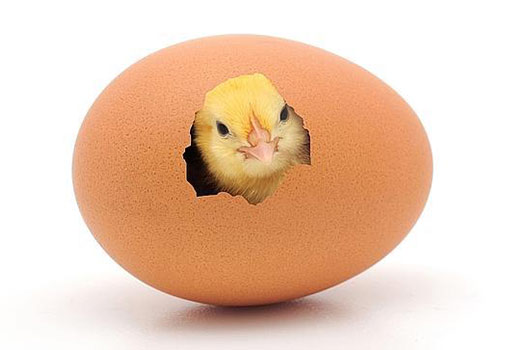
The chicken layer cages is generally 3 or 4 tiers. Customized services can also be implemented, up to 8 tiers. And the floor area is relatively small, and the interval between each row of chicken cages is about 1.5 meters.
The height of the chicken cages also increases with the height of the layered chicken house. Generally, for three-layer or four-tier cages, each row of cages should be 50 cm away from the top of the chicken house. This prevents the chicken coop from making full use of the building space and increases the density of poultry breeding by at least 3 times.
At the same time, high stocking densities are accompanied by high automation. Automatic poultry drinking equipment, automatic feeding equipment, automatic manure cleaning equipment, automatic egg collection equipment, automatic environmental control system, etc. The use of these equipment not only increases the density of poultry breeding, but also makes your profits get results faster.
Farms using poultry equipment are mechanized and have a high degree of automation. Commercial battery cages for sale operate stably, with low failure rate and less maintenance. Breeders basically do not need to enter the chicken coop, and only need to press the button lightly to achieve automatic drinking water, feeding, egg collection, manure cleaning, ventilation and other tasks. 1 person can easily manage a chicken coop of 30,000 birds.
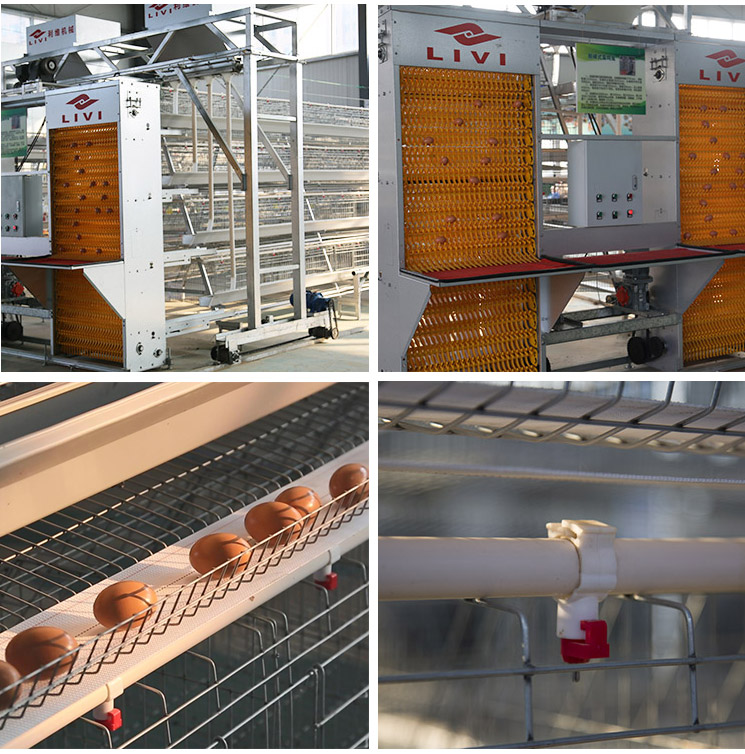
Advanced equipment promotes the economic improvement of the chicken industry. Due to the high quality of the equipment, efficient breeding and other characteristics. The high degree of automation realizes easy management by one person, etc. The transmission route of the disease is greatly reduced, and the incidence of chickens is greatly reduced. As a result, the mortality rate of chickens was reduced by about 5%.
Finally, poultry farmers must choose reliable chicken cage manufacturers when purchasing poultry cages. Quality poultry farm feeding equipment can increase the efficiency of the farm. And offers durable poultry equipment and great prices.
How to Buy the Right Battery Cage System in Ghana?
Now the poultry farming project in Ghana is hot, it is the golden age of poultry farming development. More and more poultry farmers are choosing battery cage systems in Ghana to develop projects. But how to buy a suitable poultry chicken cages?
There are many different sizes and types of battery cages on the market. In fact, it is best to choose a chicken coop that is suitable for your poultry farm.
You can choose the right battery cage based on the weight and size of your poultry and the climate in your country. For example, 1.5KG and 2.5KG require different size layer cages. The lifespan of a laying hen of the same quality can vary greatly in hot and cool weather. There are large and small spaces, and if the area is large, you can choose A-type chicken cages or H-type chicken cages. So layer cage price in Ghana is not the only consideration.
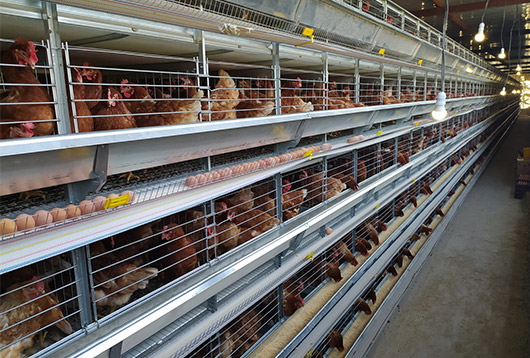
How to choose the poultry farming equipment you need in Ghana?
If you have less than 2000 chickens, we recommend that you only buy poultry cages. The drinking system is automated, but workers manually feed the chickens, collect eggs, and remove manure.
If you have 5,000 - 10,000 chickens, we recommend that you purchase a manure removal machine with a battery box. By removing feces in a timely manner, you can reduce the likelihood of disease, increase egg production, and save more time and labor costs. The scraper type manure remover is the most economical one. A semi-automatic chicken feeder also requires this number of chickens. It is small and cheap automatic chicken feeder, and because it uses a battery cage, you will avoid the inconvenience of power failure. You can feed 10,000 chickens in half an hour and save a lot of labor.
If you have more than 10,000 laying hens, you may need fully automatic equipment including battery chicken cages for sale, automatic chicken feeders, automatic egg collectors, and manure shovels (automatic manure removal systems). If your operation is larger than 50,000 chickens, you will need a feed silo. For fewer than 50,000 chickens, you can use just one screw conveyor to deliver the food to the hopper.
If you want to build a closed system, you need to know that exhaust fans and cooling pads are necessary items of environmental control equipment. If you are using an open system and the weather is hot, you can use an atomizer.
How to scientifically disinfect poultry farms?
If the chicken house is not disinfected, it will provide a good living environment for many pathogenic microorganisms. And now that poultry battery cages are widely used in poultry farms, disinfection of chicken houses has become a top priority.
Disinfection methods commonly used in chicken production
There are generally three methods of disinfection in chicken farms (with chicken disinfection, drinking water disinfection and environmental sanitation disinfection). These three disinfection methods can respectively cut off the transmission routes of various pathogenic microorganisms.
Disinfection with chicken (spray) can kill pathogenic microorganisms in the air of the chicken house, the surface of the chicken body, the ground and the walls. It is of great significance to prevent the infection of chicken respiratory diseases. In addition, the concentration of harmful gases in the chicken house is reduced, and the effect of heatstroke prevention and cooling can be achieved at the same time.
Drinking water disinfection can kill pathogenic microorganisms in the drinking water of chickens and can purify the intestines. Scientific and reasonable disinfection of drinking water can reduce the occurrence of intestinal diseases in chickens, but it has no effect on preventing respiratory diseases, and needs to be combined with chicken (spray) disinfection.
Environmental sanitation and disinfection include disinfection of chicken farm grounds, chicken farm aisles and transportation vehicles. There are many farmers who often drink disinfectant for chickens, thinking that chickens will not develop diseases. In fact, this is a wrong understanding.

Precautions for disinfection of chicken farms with layer cage systems
Disinfection needs to be done continuously. The disinfection of chicken farms is a continuous preventive work, and the disinfection time is uninterrupted. It is better to do it once every 4 to 5 days during the breeding period; it is better to disinfect it once a week during the egg laying period. Drinking water disinfection is generally 1 to 2 times a week, 3 to 4 hours each time. Note that 3 days before and after the epidemic prevention, as well as on the day of epidemic prevention and during the medication period, the drinking water of the chickens cannot be disinfected.
Choose the right sanitizer. Using only one type of disinfectant can easily cause pathogenic bacteria to develop drug resistance, and the same batch of chickens should alternately use disinfectants.
The above are the three methods and precautions for disinfection of poultry farms shared by battery cage manufacturers. I hope there is a place that can help poultry farming friends.
Possible ways and means to reduce the cost of poultry farming
Poultry farming has become a popular poultry farming project in recent years. Developing poultry farming requires steps such as building a chicken house, buy battery cage system, and purchasing chickens. Money is needed everywhere, so today we will talk about how to save money.

- Feeding should be appropriate. According to statistics, when feed is added to 1/3 of the trough, the waste rate is at least 2%. Many poultry farmers want to let their chickens eat more feed, so they put the feed in 2/3 of the trough. The waste rate of this feed is as high as 12%.
- Prompt beak trimming. The chicks are beaked at 6-9 days of age to prevent picky eating and hooking and throwing of feed when feeding, so as to reduce feed waste. Improve brooding rate, good group life, easy to manage.
- Buy battery cage for poultry. Now poultry cages are used in various countries. It can improve the efficiency of poultry breeding and save space. And the purchase of high-quality poultry farming equipment can be used for 20 years. Friends who want to use a battery cage can choose an experienced chicken cage manufacturers to buy it.
- The feed ratio is reasonable and the nutrients are balanced. Chickens cannot absorb nutrients from the feed indefinitely. If the feed mix is unreasonable, too much nutrition can only be wasted; if the feed is too coarse, the feed of different particle sizes will be quickly excreted after being eaten by the chickens. cause waste. Therefore, the full-stage feed should be used reasonably, such as self-compounding, which should be formulated in strict accordance with the standard.
- The temperature of the chicken house should be suitable. When the temperature is too low in winter, chickens need to increase the heat by increasing the feed intake, and the feed loss is about 10%, which will cause waste. Therefore, it is also very important to be warm in winter and cool in summer.
- Scientifically store feed. Especially in summer and autumn, the feed is susceptible to moisture and mold or deterioration due to increased fat oxidation, reducing the value of the feed and causing waste. Therefore, the storage of feed should be protected from light, ventilation, moisture, and insects, and feed as little as possible in the rainy season.
A Type Poultry Cages VS H Type Poultry Cages in Chicken Farm
With the increasing number of large-scale chicken farms, it is more contradictory for chicken farms to choose automated poultry cages for equipment, and they do not know how to choose. The following poultry equipment manufacturers will introduce to you how to make decisions on the selection of equipment for your reference
A Type Layer Cages
The laying hen equipment is a type A chicken coop. You can choose to install two types of manure cleaning: scraper cleaning and belt cleaning. It is a relatively early use of laying hen breeding equipment. If your coop can hold 5000-30000 birds. A-type battery layer cages are very suitable.

Advantage:
- The cost is low, and the breeding density is higher than that of flat breeding.
- The open area of each layer of chicken coop is large, even if it is an open chicken house, the ventilation effect is good.
- Reasonable design, easy to operate,
- Easy maintenance and long service life.
- The easy-to-open spring-loaded door makes it easy to observe and move the pullets.
Shortcoming:
- The area is relatively large, and the space utilization rate is low compared with the H-type chicken cages;
- The labor intensity of workers is high;
- The chicken manure on the upper tierof the chicken cage will fall to the chickens on the lower tier, which is not conducive to the health of the chickens and the integrity of the feathers.
H Type Poultry Cages
Chicken cages are tiered on top of each other like buildings. This kind of equipment was developed later, due to the increasing shortage of land resources, less and less land can be used for breeding. Therefore, more and more customers increase the stocking density, just to save land, and the degree of intensification is getting higher and higher.

Advantage:
- Vertically battery chicken cages save more floor space, increase the number of feeding, reduce labor and management costs, and ultimately bring considerable profits to chicken farmers.
- There is a manure removal belt at the bottom of each cage, which is clean and hygienic, allowing the chickens to grow healthily and less pollution to the environment.
- Small footprint, high space utilization, easy to achieve intensive and large-scale breeding;
- Sliding cage door, the opening is convenient and large, and it is easier to catch chickens.
Shortcoming:
- It adopts closed type and automatic temperature control, otherwise it is difficult to control the temperature inside the chicken house.
- There are at least tens of thousands of chickens in a chicken house, and the risk factor is relatively high.
Based on the above situation, I believe everyone knows how to choose. The chicken farmer still choose the equipment that suits them according to their total amount of laying hens and investment.
What are the benefits of choosing battery chicken cages to raise chickens?
Battery chicken cages are specially produced for poultry farming. It is suitable for layers, chicks, broilers and breeders. A high-quality chicken coop can overcome broiler udder inflammation. It is also recommended that poultry farmers buy high-quality chicken cages. Chickens do not need to be turned over before being sent to the slaughterhouse, which saves the trouble of catching chickens and avoids possible adverse reactions of chickens.
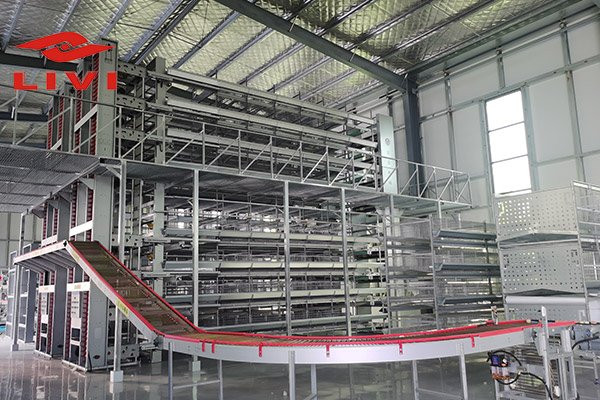
- High degree of automation. Automatic feeding, drinking water, manure cleaning, wet curtain cooling, centralized management, automatic environmental control. Save energy consumption, improve labor productivity, reduce the cost of manual feeding, and greatly improve the farming efficiency of farmers.
- Chickens have good anti-epidemic properties and can effectively prevent infection. Chickens do not touch manure, which can make chickens grow healthier, provide chickens with a clean growing environment, and greatly increase the time for slaughtering and laying eggs.
- Reasonable design. Allow fresh air to circulate the space and reduce the spread of disease.
- Save breeding feed: battery cage for layers can save a lot of chicken cage breeding feed. And chickenbattery cages can reduce exercise, energy consumption and waste. Chicken cages can effectively save more than 25% of breeding costs.
- Sturdy and durable: The complete set of cage chicken equipment adopts hot-dip galvanizing process, which is corrosion-resistant, anti-aging, and has a service life of 15-20 years.
- Easy to install and maintain.
Common battery cages are generally 3 or 4 tiers. Its design structure is reasonable and suitable for the development of intensive poultry farming. High-density farming saves land, 50% less than free-range farming. Centralized management saves energy and resources and reduces the high incidence of poultry diseases. The unique cage door design can effectively prevent the chickens from wasting feed by shaking their heads up and down.
More...
Does the layout of the layer chicken cages have anything to do with what nutrients the chickens need?
Battery cages for chickens are now a popular form of poultry farming. Generally 3 or 4-tier cages are assembled and arranged. High stocking density and high utilization rate of poultry farms. If the number of tiers is higher than 5 tiers, the hygiene of the chicken house is difficult to control. And the requirements for the chicken farm are higher. Therefore, there are generally no more than 5 tiers of chicken battery cages without automation.
Chicken Laying Cages for Sale
Automatic egg layer cages include A type and H type. The utilization rate of the chicken house is high, and the stocking density per unit area is high. The battery cage is suitable for 3-4 tiers. The egg layer cages is made of high quality mild steel with hot dip galvanized surface. They have a lifespan of up to 20 years.
Whether you have a large chicken farm or a small chicken farm, we can provide you with a complete solution and have commercial chicken cages.

What is the relationship between the nutrients required for chicken cages to raise chickens?
There are dozens of nutrients required for raising chickens in egg layer cages, and there are various relationships between them. Chickens, like other livestock and poultry, require regular intake of certain nutrients in order to sustain life, grow and lay eggs. In order to maintain body temperature or perform various physiological activities and sports, adult chickens must constantly consume substances in the body.
What Nutrients Do Chickens Need?
The growth and development of chicks, the laying of eggs by hens, and the required substances all come from feed, whether it is flat-raised chickens or chickens raised in laying hens. For example: moisture, crude protein, carbohydrates, crude fat, minerals, vitamins, etc.
The above is the relationship between chicken layer cages and chicken nutrition shared by poultry equipment manufacturers. I hope the content shared is helpful to poultry farming friends. For more information on poultry farming, please follow the website.
Introduction to the technology of ecological chicken raising
With the increasing demand of society, the breeding industry has developed vigorously. The most common form of farming is chicken farming. There are many ways to raise chickens, and they are generally free-range. However, with the maturity and development of breeding technology, many new breeding models have gradually emerged, such as ecological chicken breeding technology. What poultry equipment manufacturers want to talk about today is ecological chicken raising technology.
- Selection of Breeding Site
Ecological chicken farms should try to choose places with higher terrain, sufficient water sources, convenient transportation and electricity, and far away from polluted areas. It is best to be surrounded by forests, mountains, orchards and other places with rich resources. After selecting a breeding site, it is necessary to transform the site. The most important thing is to build a fence to prevent chickens from escaping. At the same time, it can also play a role in preventing natural enemies such as rats and weasels.
- Choose The Breed of Poultry
Chickens can be purchased after the establishment of the breeding site. Ecological chicken farming needs to choose varieties with strong survivability and strong adaptability to the environment. You can choose from laying hens, broilers, chicks, breeders and other breeds. These chickens not only have strong adaptability, but also have advantages in breeding prospects and economic benefits.

- The Price of Poultry Cages in the market
After choosing the breed of chicken, it is necessary to buy the corresponding chicken cage. Now poultry cages are mainly divided into A-type chicken cages and H-type chicken cages, as well as flat raising systems. They are divided into layer chicken cages, broiler chicken cages, brooding chicken cages, breeder chicken cages, etc. according to different varieties of chickens. To develop ecological chicken farming, automated poultry equipment is a must. Not only does it save effort, but it can also create higher profits.
- Feeding and Daily Management
During the chick period, attention should be paid to the management of feed feeding and other aspects. Chicks are relatively fragile. In order to improve the survival rate, farmers should focus on the management of chicks, and strictly control the light and humidity. Adult chickens are mainly for fattening, so it is necessary to strengthen the feeding of concentrates and feed them in the evening.
The breeding site should be cleaned frequently to maintain hygiene, and attention should be paid to disinfection of the breeding site during the peak period of infectious diseases to prevent chickens from contracting germs.
The above is the selection of poultry equipment manufactures from the chicken house, chicken house management, poultry cage equipment, and daily feeding management. It is convenient to analyze the ecological chicken raising. Hope to be able to help poultry farming friends make sense when starting a poultry farming project.

